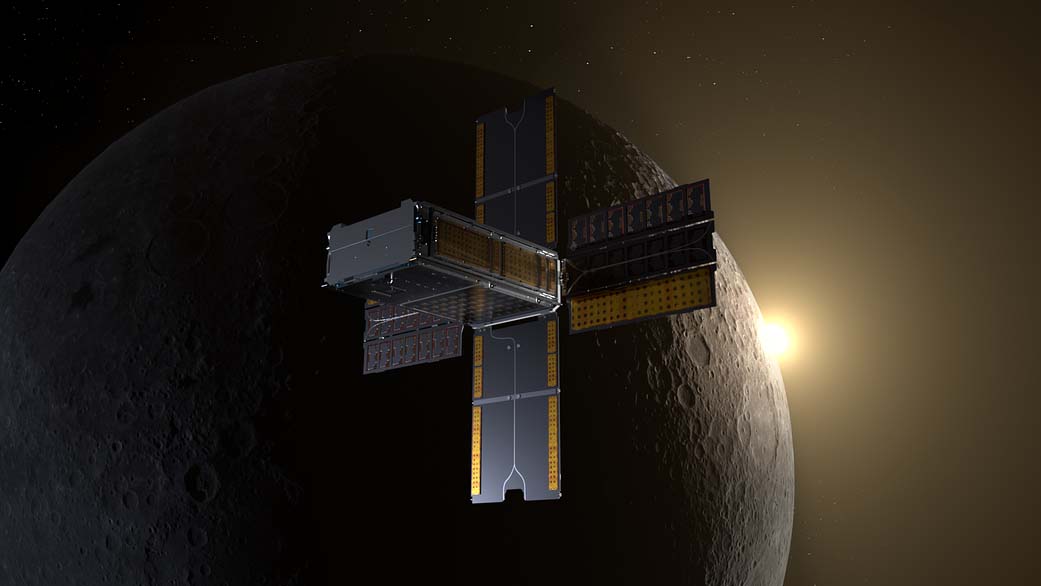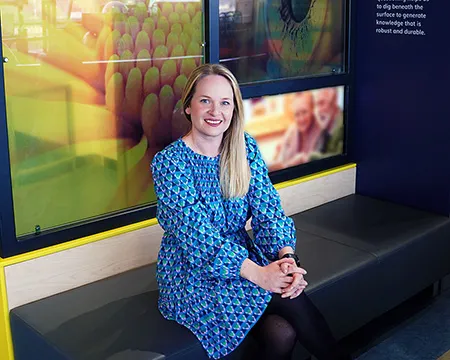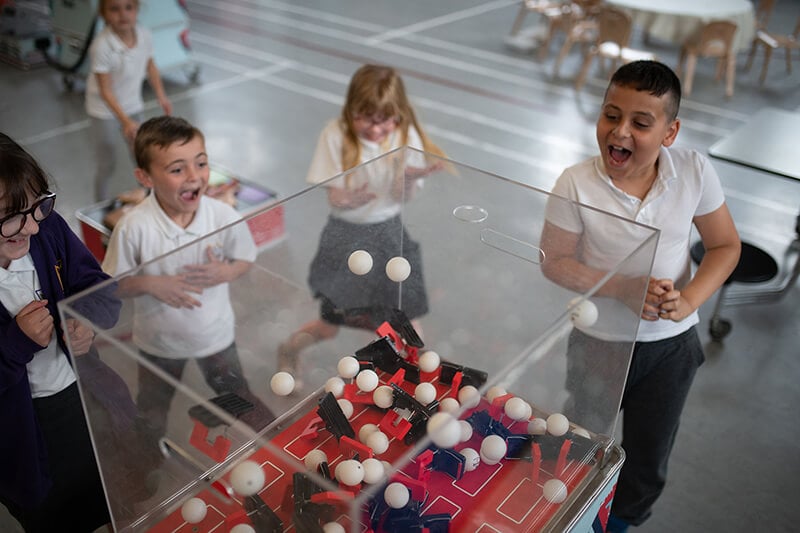Artemis and the return to the Moon

We are all connected to the Moon.
Humans have gazed up at the Moon with curiosity for thousands of years. Generations of scientists have observed and studied the Moon from afar, pondering questions such as “Is it made of cheese?”, “Is that the face of a man on the Moon?” and “I wonder if we could go there?”.
Why is the Moon so important?
Read: The Apollo Journey to the Moon
The Moon and Apollo
The Apollo missions, over 50 years ago were a giant leap for humankind, but just one small step on the path to deep space exploration. Now, we begin our return to the Moon. The Artemis missions mark a new phase in our history as we explore further than ever before.
Who are Apollo and Artemis?
The missions are named Artemis after the Greek goddess, who was strongly associated with the moon and the twin sister of Apollo. All previous missions to the Moon were named Apollo.

The Artemis Missions

NASA’s return to the Moon and beyond begins with the Artemis missions. The programme aims to put the first woman and person of colour on the Moon’s surface. It will also see international and commercial partners working together to explore further than ever gone before, develop new technology and create jobs. Throughout the missions, a whole new generation will be engaged on the topic and inspired to pursue science and engineering – The Artemis Generation.
The first mission, Artemis 1, is an uncrewed flight test which will orbit the moon, deploy satellites and test the spacecraft capabilities. Artemis 2 will be a crewed flight test and Artemis 3 and beyond will be crewed flights to the Moon’s surface. The hope is to establish a long-term habitat on the Moon for astronauts to live and research in, much like on the International Space Station.
The information and technology we gain from these missions to the Moon will be applied to NASA’s next step in space exploration – sending humans to Mars.
Launching Artemis 1
Artemis 1 is an uncrewed test flight of the Space Launch Rocket System (SLS) that will be used in future missions. It’s carrying the Orion spacecraft and several small satellites. The SLS is the most powerful rocket in human history. Its four engines burned through 90,000 US gallons of fuel per minute in the 8 minutes before the rocket and spacecraft separate. The engines generate 8.8 million pounds of thrust to launch the 6-million-pound rocket into orbit.

The rocket uses a mixture of solid and liquid fuels. The liquid fuels are hydrogen and oxygen. When combined they generate huge amounts of energy that can propel the rocket into space. The Artemis 1 rocket soared into space at a speed of approximately 17,000 miles per hour.
It was launched from Launch Complex 39B at the Kennedy Space Centre in Florida. This area of Florida is known as “The Space Coast” as it’s home to not only the NASA’s Kennedy Space Centre, but also the Cape Canaveral Space Force Station. The Kennedy Space Centre is NASA’s main launch site and was also used in the Apollo missions.

Link: Scotland is the new Cape Canaveral! Ok, not really but Scotland is building a spaceport.
Shortly after liftoff, Launch Director of the Artemis 1 mission, Charlie Blackwell-Thompson said:
“And for the Artemis generation, this is for you.”
She is the first female Launch Director at NASA and is working on the mission to put the first woman on the moon. Of the engineers working on Artemis, approximately 30% are women! The Artemis Generation refers to the people around the world who will watch the Artemis missions and be inspired by them.
To the Moon!

The Orion spacecraft will deploy 10 satellites into orbit as part of the Artemis1 mission. These small satellites known as CubeSats have been developed by various universities, researchers and tech companies to carry out experiments in space.

NASA is responsible for 1 of these shoe-box-sized satellites, Lunar Ice Cube. It will use a spectrometer to observe the release and absorption of lunar water from the regolith – the Moon’s rocky, dusty surface. Lunar Ice Cube will also monitor the very thing atmosphere surrounding the Moon so that seasonal changes in the lunar ice can be tracked. This will allow researchers to decide if this ice can be used as a resource for astronauts in future.
Humans have been sending satellites into orbit for over 60 years. Now, many of those satellites come from Scotland. In fact, Scotland produces more satellites than anywhere in the world, other than California!
Link: Get the basics on what we mean by the term “satellites” from Katie in this episode of a Spark of Science, What are Satellites?
Or in the video, What is a Satellite?
At the Moon!
The Orion spacecraft will travel further into space than any other craft capable of supporting human life. It will travel 280,000 miles from Earth, approximately 1000 times further than the International Space Station. The closest point in the journey will see Orion pass over the Moon at just 60 miles from the surface. While it is at this furthest point in its journey, onboard systems will be tested to ensure they are ready for crewed missions.
Artemis 2 will be a crewed flight test, very similar to Artemis 1. Artemis 3 will be the first Artemis mission to include a Moon landing and exploration of the lunar surface.
Return from the Moon!
As the spacecraft returns to Earth, the service module and crew module separate. The crew module will turn into the correct position so that the heat shield is facing the direction of travel. This is the world's largest heat shield. It will be expected to withstand temperatures of 2760 degrees Celsius, half the temperature of the Sun.

Orion’s crew module will decelerate with the support of a series of parachutes from speeds of 24,500 miles per hour to 0 in a matter of minutes, allowing the capsule to splashdown in the Pacific Ocean off the coast of California where it will be recovered by a US Navy Ship. Just 25 and half days since launch, the Orion will have returned to Earth having clocked up several hundred thousand miles in its journey. The craft will stay powered for several hours after splashdown to monitor the cabin temperature reached during re-entry.
Have a go at being a NASA engineer and design a lunar lander in this GSC at Home video: #GSCAtHome: Egg Drop Challenge
What’s Next?
The missions to return to the Moon marks a move to a more sustainable and long-term presence in space. NASA is developing new human landers that will take the astronauts from their spacecraft to the lunar surface. There are plans for new lunar terrain vehicles and a surface habitat that could allow 4 crew members to explore the Moon for up to 45 days!

NASA hopes to have humans living and working on the lunar surface and in deep space for extended periods of time. To do this, they need a habitat and support system. Gateway will be a space station within the Moon’s orbit that will allow spacecraft to dock, humans to live and work and shuttle supplies to the Moon. Gateway will be a collaborative project between NASA, the European Space Agency (ESA), the Japanese Aerospace Exploration Association (JAXA) and the Canadian Space Agency (CSA) as well as several commercial partners. The space station will be built in stages over several years in a series of crewed and uncrewed missions.
Gateway forms the first step in sending humans to Mars. It will form a key stage of the journey there, acting a bit like a service station before the long flight to Mars.
Link: Find out how we support astronauts living in space on the International Space Station (ISS)
Learn about what it’s like to be in mission control for the ISS in this issue of The Spark Magazine.
Mars
The Artemis missions to the Moon are key to the missions to Mars. Going to the Moon allows scientists to test out new tools and equipment that could be used on Mars including human habitats and life support systems that can reliably operate far from home while still being light enough to launch. These will be key pieces of technology to take astronauts safely on the 34-million-mile trip to Mars.
Astronauts living in space for a few months on or orbiting the Moon will allow researchers to better understand the effects this might have on the human body and how best to prepare people for the mission to Mars.

What happens to humans when they go to space? Find out here: #GSCAtHome: What Happens To The Human Body in Space?
Link: Build your own Mars Rover in this edition of the Spark Magazine.
Scotland in Space
Scotland has a long history of innovation and engineering, but we’re not just building ships – we're also building rockets! The Scottish space industry is taking off with plans currently underway to develop spaceports across the country where we will be able to launch rockets and send objects into space. Humans have been sending satellites into orbit for over 60 years. Now, many of those satellites come from Scotland. In fact, Scotland produces more satellites than anywhere in the world, other than California!
We’ve been able to work with some of Scotland’s leading space industry experts – Skyrora and AAC Clyde Space.
Skyrora are an Edinburgh based company that design, develop and launch rockets to deliver small satellites into Earth orbit. Their work includes research and development into Ecosene – a rocket fuel made from unrecyclable plastics. We have been able to work together during our Curious About: Innovation online science festival which allowed school children from across Scotland to meet the experts! You can watch it again here:
Watch: Scotland in Space - Derek Harris of Skyrora
AAC Clyde Space are specialise in small satellite technology. Their facility in Glasgow is their main hub for satellite manufacture, development of advanced satellite components and is part of their operations service. We have been able to work together on our Curious About: Innovation online science festival which allowed school children from across Scotland to meet the experts and in Learning Lab – our online STEM learning programme for the classroom and home. Find out more about Scotland’s space sector here:





